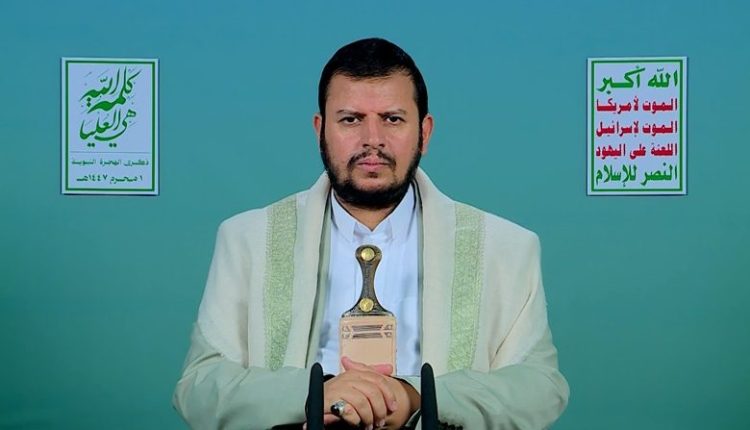Analytical Reading of the Mr.Leader’s Speech on the Hijra Anniversary and Recent Developments
In his comprehensive address coinciding with the arrival of the new Hijri year, 1447 AH, Sayyid Abdul-Malik al-Houthi presented a deeply analytical message that combined felicitation to the Muslim Ummah, a precise assessment of its current condition, and a detailed account of the Islamic Republic of Iran’s victories. He called upon the Ummah to reassess its awareness of time, its faith-based priorities, and its jihadist responsibilities.
1. Linking Time and Event
The New Hijri Year as a Catalyst:
He began by congratulating the Ummah on 1447 AH, then specifically lauded Iran’s great victory over Israel. He framed this triumph not merely as Iran’s alone but as a collective gain for all Muslims and a resounding defeat of a Western-Zionist axis led by the U.S., U.K., France, and Germany.
Time as an Impetus for Righteous Action:
The anniversary of the Hijra was presented as an opportunity for believers to examine how they invest their lives, warning against squandering time in frivolity.
Critique of Neglecting the Hijri Calendar:
He lamented that many Muslims disregard the Hijri calendar, despite its role in preserving Islamic identity and unifying collective memory.
2. Emphasizing Iranian Strength and Resilience
Celebration of the Iranian Victory:
The leader asserted that the Israeli aggression against Iran was a calculated assault months in the making, aimed even at toppling the Islamic system itself—but it failed spectacularly against Iran’s military and ideological fortitude.
Dispelling the Myth of an “Invincible Army”:
He highlighted how waves of ballistic and hypersonic missiles shattered the notion of Israel’s unconditional deterrence— directly refuting former President Trump’s notion of an unconditional surrender.
3. Prioritizing Jihad and Resistance
Multi-Front Operations:
He reviewed the Qassam Brigades’ ambush in Khan Yunis—“a complex, precision operation”—and Yemen’s ongoing missile and drone strikes, showing that the struggle extends from Gaza to Yemen.
Collective Duty:
His call for a “million-man march” in Sanaa and across provinces symbolized renewing the pledge to the Prophet, supporting Palestine, and linking Yemen’s present struggle to its proud past.
4. Strategic Political Messaging
Rejecting American and Zionist Presence:
He reiterated “No America in the region, no survival for the Zionist entity,” framing this as the ultimate goal of the revolutionary path.
Condemning U.S. “Aid Traps” in Gaza:
By labeling American relief efforts as instruments of genocide, he aimed to galvanize international condemnation of any Western role in Gaza.
5. Reviving Jihadist Spirit and Personal Accountability
Spiritual Foundations of Resilience:
He attributed Iran’s steadfastness to its jihadist ethos and independent development, encouraging Muslim nations to build their own capacities.
Warning Against Negligence:
He cautioned that those who waste their lives in worldly distractions will regret it when faced with death—underscoring that time lost to sin and amusement cannot be reclaimed.
Conclusion
Sayyid al-Houthi’s speech weaves together religious commemoration and strategic analysis, presenting a unified vision:
Time as both accountability and motivation.
Defensive strength transformed into strategic offense.
Resistance as a collective, institutional choice.
Ummah unity grounded in faith and history.
By turning the new Hijri year into a “platform for awakening,” he issued a clear call for renewed commitment to jihad and the liberation of occupied lands.

